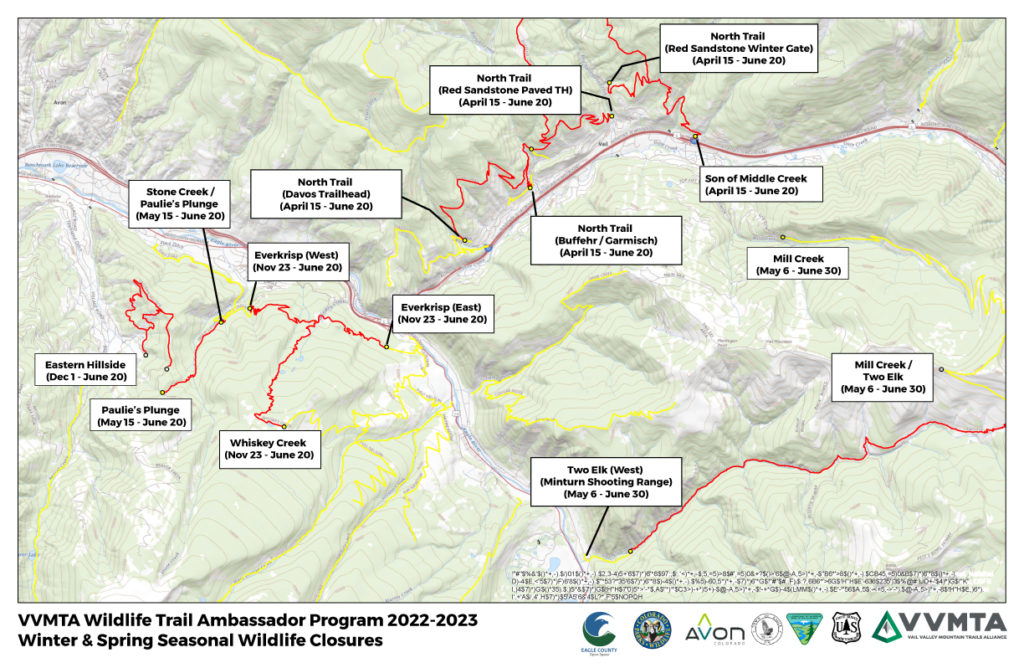It is coming up on mid-June and the wildlife are on the move from lower elevations to the melting out upper elevations of our valley. They are following the snow line as it gives way to food for them to consume and gain back their strength after a long winter. When you think about it, they are not too different than us as trail users. We follow the drying trails starting in Eagle in the spring and end up on high alpine trails in the Gore and on Vail Pass in the summer.
The big and major difference though is that we have many options to get on trails not in critical habitats, no matter what time of year it is. The elk and deer have limited habitat and can’t hop on I-70 to go find food or shelter like we can go find dry trails.
They are moving into the upper elevations where food is growing and where temperatures are more tolerable to find solitude to give birth to their calves. Spring is the calving season for deer and elk and it is critical that they do not get disturbed. Numerous scientific studies have proven that human disturbances have a severe negative effect on elk calves and can easily cause death. This can be for many reasons including mom and baby being separated and increased heart rates resulting in fatigue for both.
How would you like it if I came into your kitchen and pushed you out into your front yard? Good luck finding food and shelter out there! This is essentially what we are doing when we push elk and deer out of their critical habitats during seasonal wildlife closures.
These critical habitats for elk and deer are why we have seasonal wildlife closures. Every year a great movement occurs throughout our valley. To help explain this migration and the need for our local seasonal wildlife closures follow the story map below.
The maps/images contain our local trails with CPW habitat data updated in December 2020. This data is free and open to the public.
November/December – April/May
Elk and deer retreat to the lower elevations and south facing sunny slopes of our valley. These habitats provide shelter from the winter snow and allow for limited food sources.
These habitats include trails such as Will’s Thrill, 3rd loop of Haymaker, Extra Credit, 3 Sisters Trail in Brush Creek Valley Ranch & Open Space and all of West Eagle’s trails. Up valley this includes the West Avon Preserve as well. These trails and areas are all closed during this time period to allow the elk and deer to rest and search for food sources.
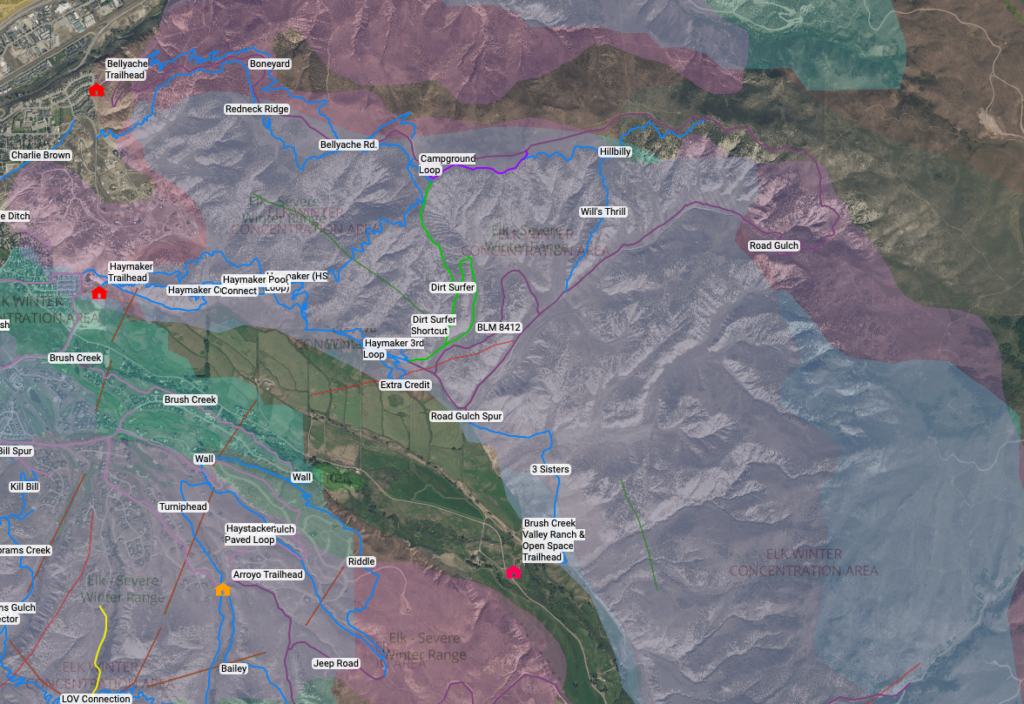
April/May – July
Closures begin to lift in many parts of our valley as the migration begins including in Eagle and the West Avon Preserve. The elk and deer herds begin to migrate from the warming lower elevations to higher grounds. They follow the melting snow line from Eagle to Cordillera to Beaver Creek and on the North side of I-70 from Wolcott to Vail.
The entire upper half of Arrowhead and Beaver Creek, including trails such as Village to Village, Elkhorn, Mud Springs, and more are closed through June 30th as elk begin to have their calves. As many know (and use) there are illegal trails in this area as well. Since they are illegal, they are not managed and do not have specific wildlife closures. This does not mean that these trails are open. In fact, instead of us working with land managers to try and bring them into the trail system legally so we can manage them and enjoy them, it is more likely that they will be completely decommissioned due to illegal use during these critical times.
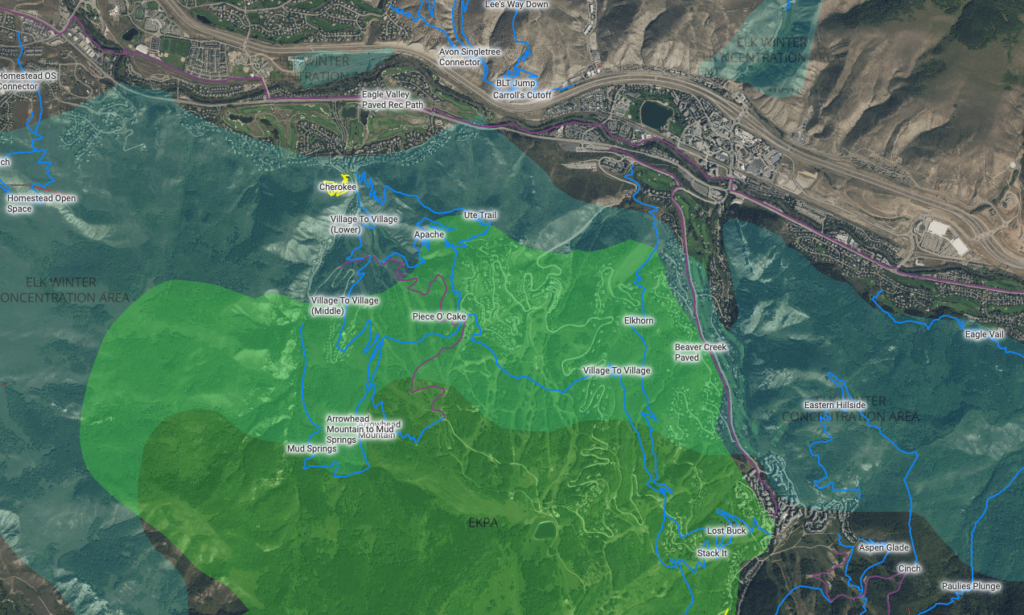
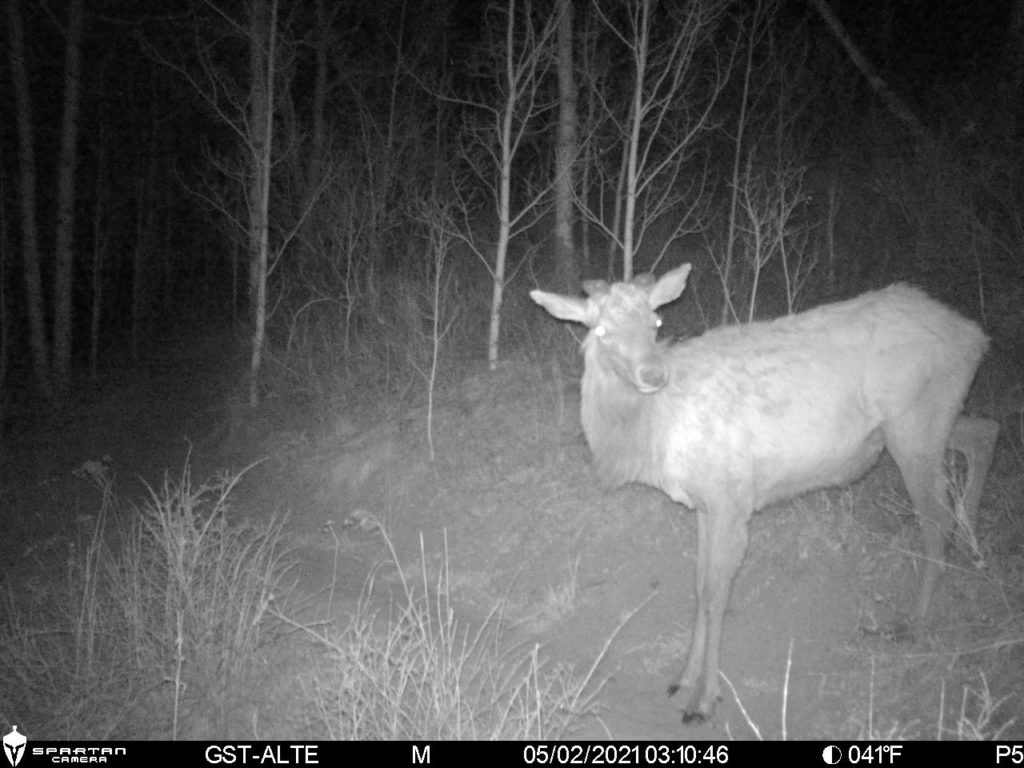
Elk herds in the Minturn area tend to survive on south/west sunny facing slopes above the Minturn Shooting Range and around Maloit Park where snow often melts away and allows them to scour for food sources. The herd that winters in the habitat above the Minturn Shooting Range begins to move into the Two Elk drainage when Spring comes. The Mini Mile and Minturn Bike Park seasonal closures are lifted on May 1st and at the same time (May 6th), seasonal wildlife closures go into effect in the Legendary Back Bowls of Vail and Two Elk. They move from the warming, sunny aspects to the more temperate and secluded Two Elk drainage to produce calves. This is why Two Elk and the entire Back Bowls area has a seasonal wildlife closure through June 30th.
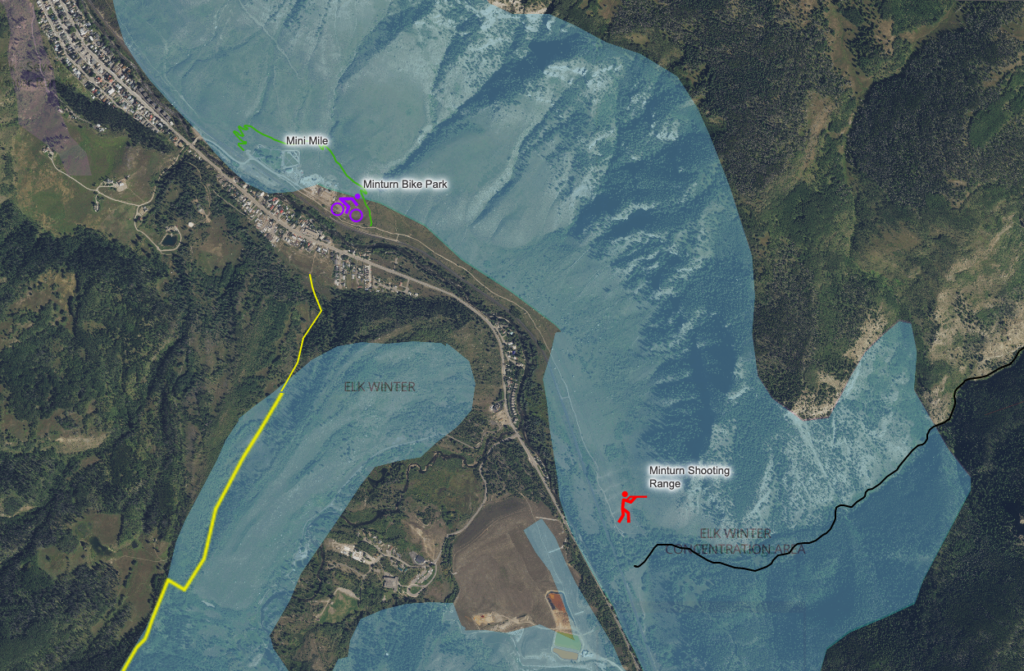
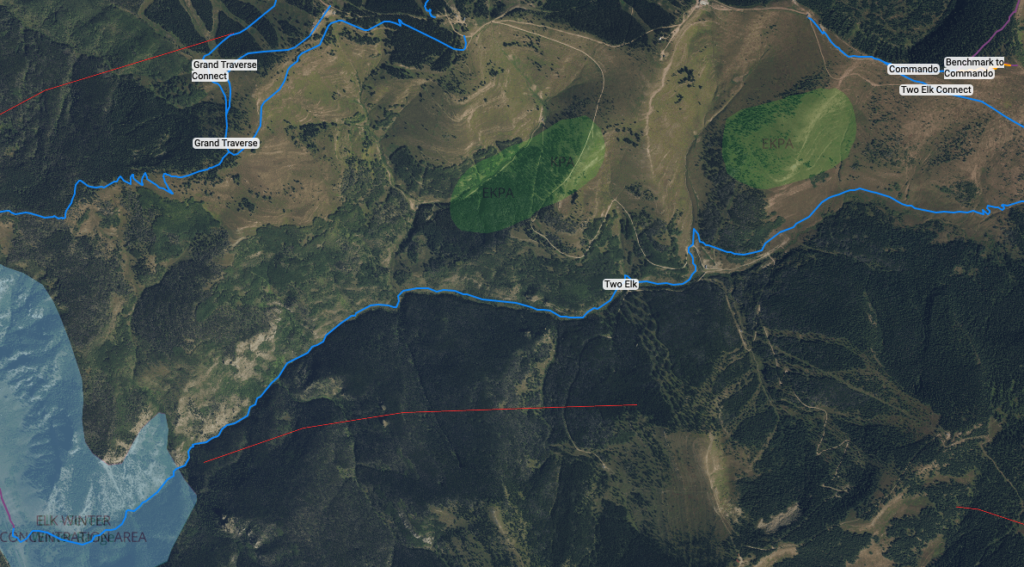
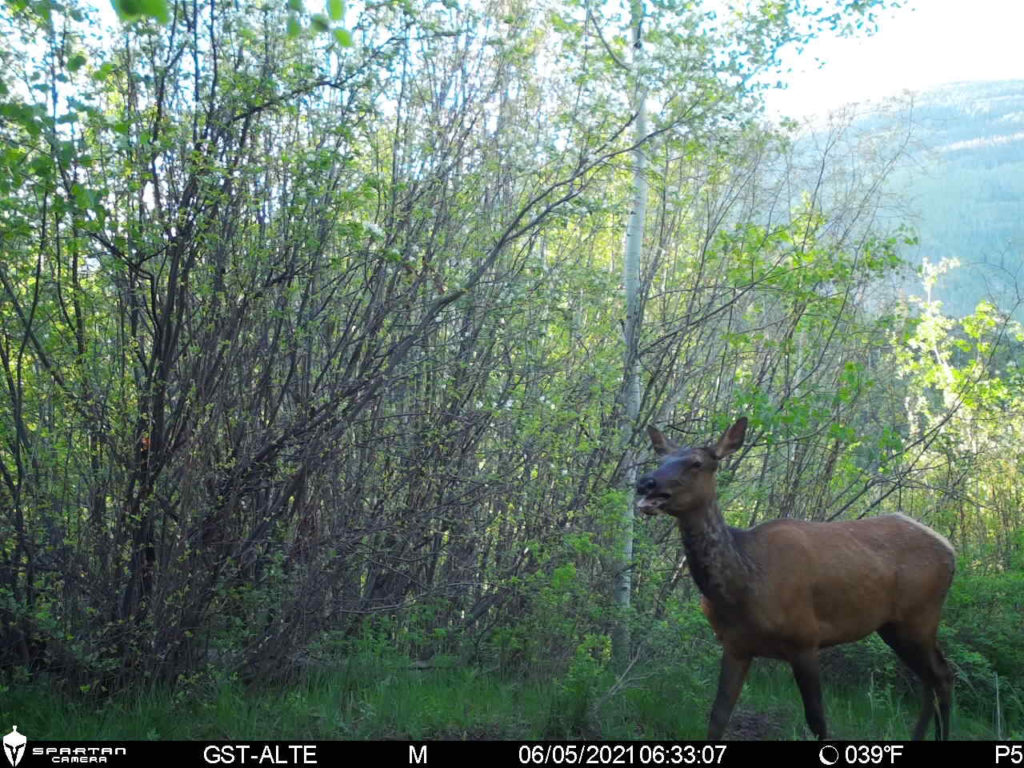
On the North side of Minturn, elk herds are moving into the sheltered habitat above EagleVail and producing calves. This critical habitat was there and is still there well before the Everkrisp Trail was built. Whisky Creek and Everkrisp are smack dab in the middle of winter habitat and spring calving area and is why they are both under closures from November 23 – June 20.
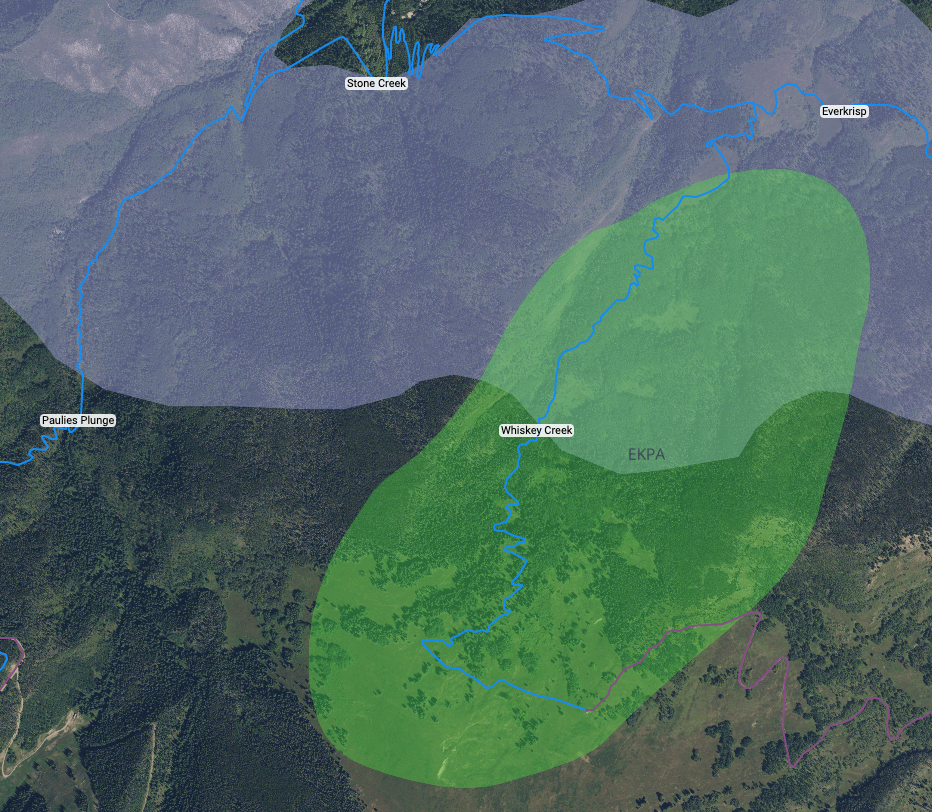
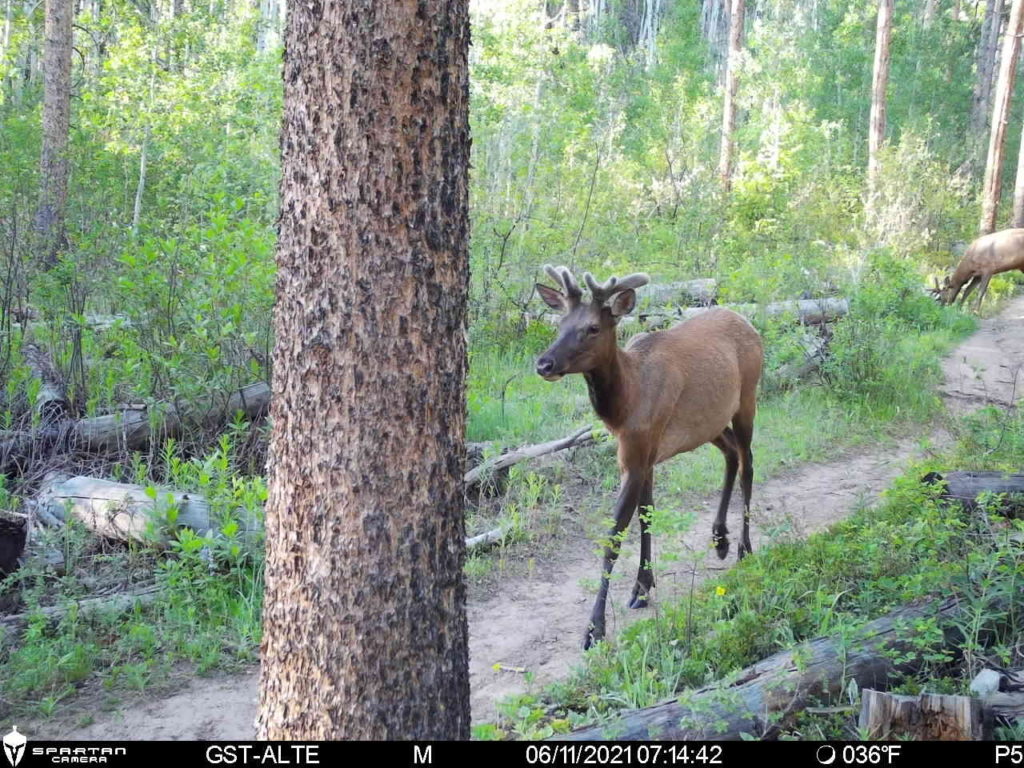
On the North side of I-70, deer and elk are migrating from the sunny, south facing habitats they have called home for the winter into the more temperate and forested areas above West Vail. These herds more than likely spent a majority of their winter in areas above the Berry Creek trail system and West Avon Preserve. As they move into Vail in the spring and early summer, trail closures on the North Trail, Buffehr Creek, and Son of Middle Creek go into effect through June 20.
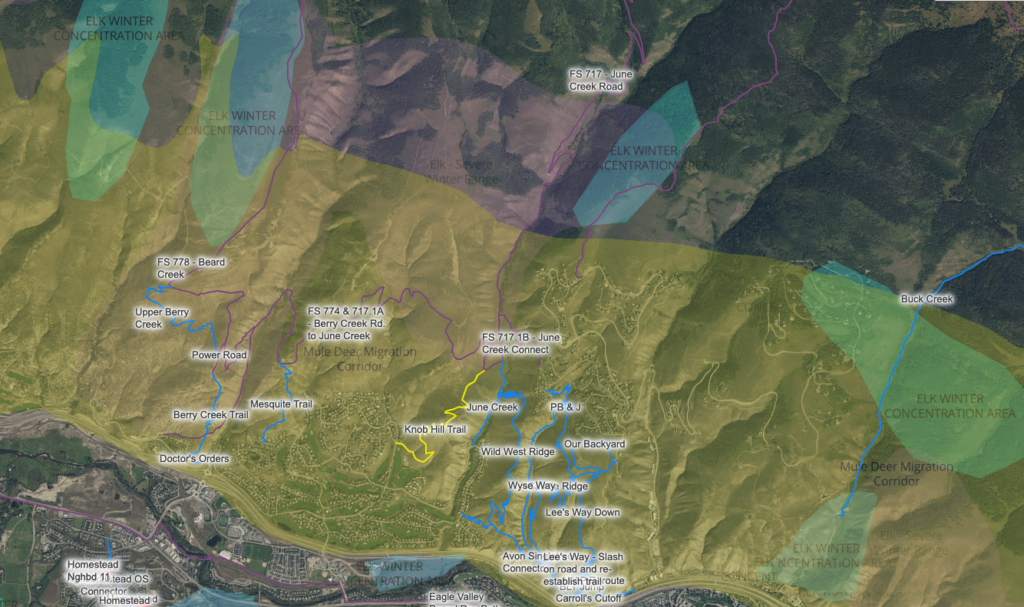
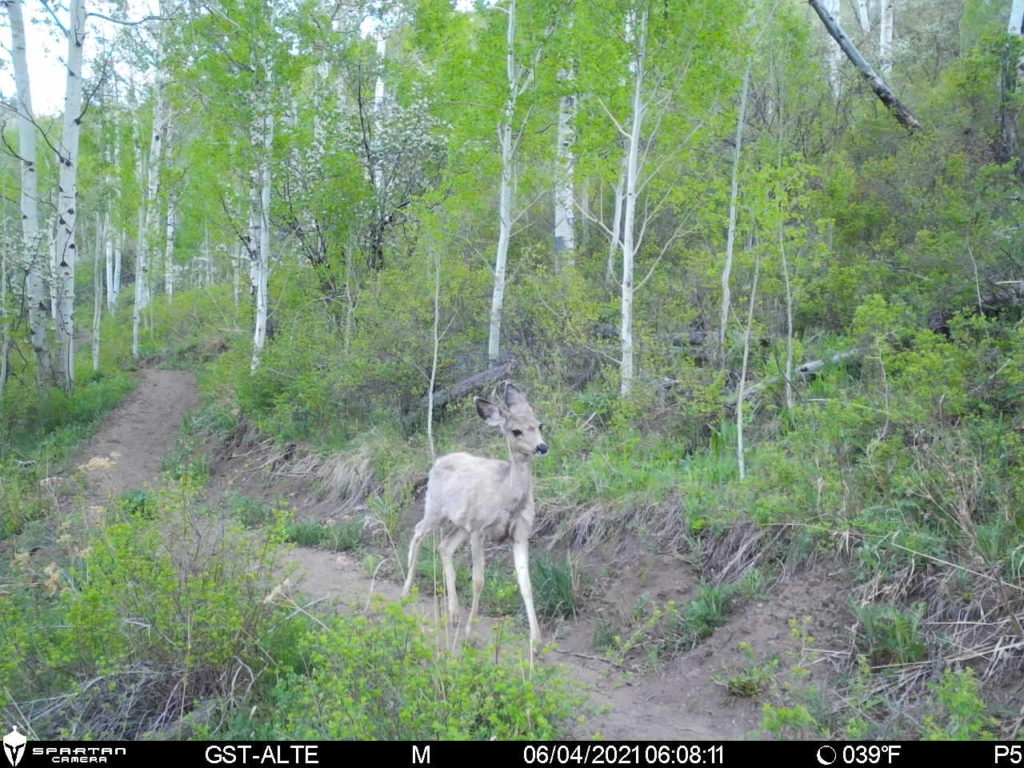
As July and mid-summer hits, these herds begin to move into the upper elevations in and near alpine where they can forage, enjoy more temperate weather, and get away from humans. However, they soon will begin moving down into lower elevations and reversing the migration as fall/winter begins to show its face.
In November, the “yo-yo” like movement of going out and back starts all over again. These elk and deer herds are constantly on the move from spring until late fall strengthening themselves and their calves by eating as much food as possible before winter. In winter, it is critical for them to not be disturbed, allowing pregnant females the ability to rest and conserve as much energy as possible so they can have healthy, strong calves in the Spring.
We are not too different as we retreat to the lower elevation trails in our valley that stay dry later into the fall trying to get that last ride, hike, or trail run in before ski season comes.
Current Seasonal Wildlife Closures
If you told your boss that you are going on vacation from April 15-June 20, what day would you meant you are back in the office? Yeah, us too, the 21st. That extra day is as important to us as it is to the deer and elk. Trail closure dates are THROUGH the listed closure date and open the next day.
For a full list of seasonal wildlife closures visit our website here.

